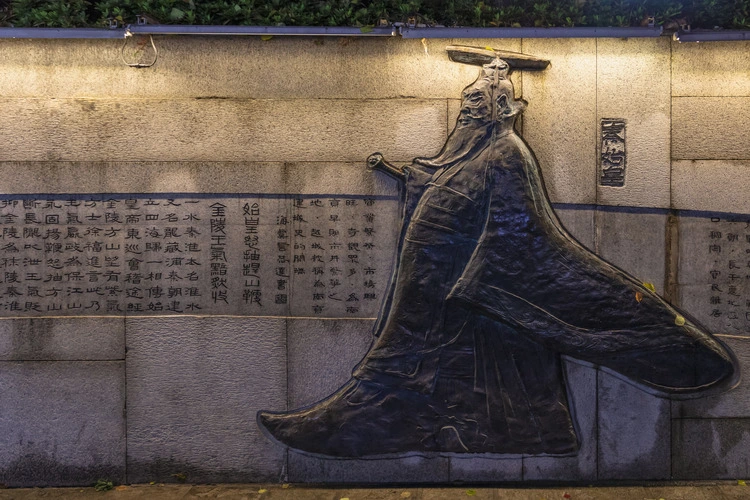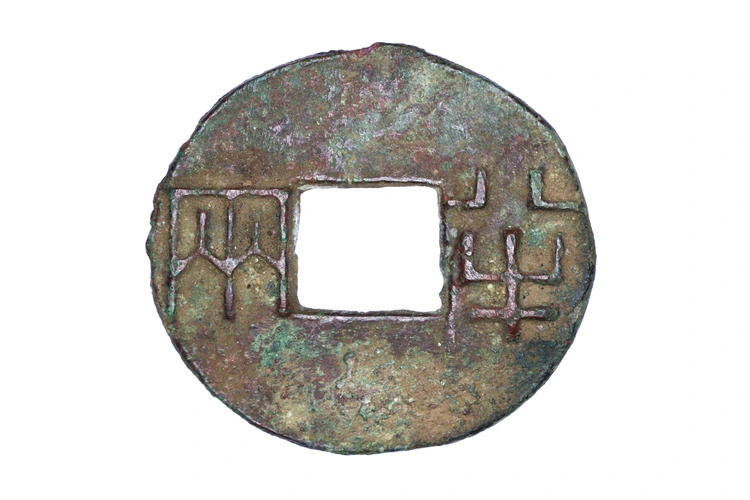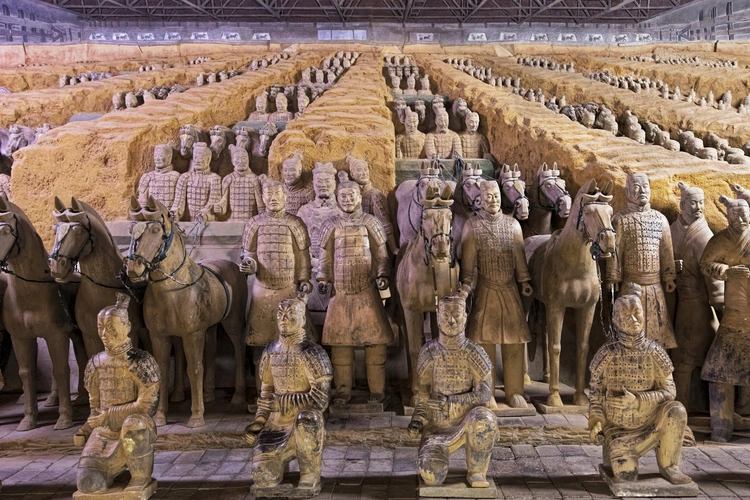
Discover the lasting legacies of unified China’s first emperor Qin Shi Huang which influenced Chinese history for centuries
By
Over two thousand years ago, Qin Shi Huang became China’s first emperor, marking a critical moment in the country’s history. His rule brought lasting changes that laid the foundations of Chinese society and governance, despite his relatively short reign from 221 to 210 BCE.
But what legacies from his time as emperor remain today, and how have they influenced the evolution of China?
Related reads:
Who was Qin Shi Huang?
Qin Shi Huang, originally named Ying Zheng, was born in 259 BCE in the state of Qin during the Warring States period of ancient China. Ascending to the throne as king at just 13 years old, he quickly began gaining power, and by 221 BCE, he had unified the various warring states, becoming the first emperor of a unified China.
His reign was marked by a strong authoritarian approach, utilising the philosophy of Legalism to maintain control. During his rule, he divided the lands into 36 command areas, each supervised by a governor, a military commander, and an imperial inspector, all of whom reported directly to him. He relocated thousands of influential families from their home provinces to the capital which he ruled, allowing him to monitor them closely and build one of the largest armies of his time.
Qin Shi Huang’s rule, which lasted until he died in 210 BCE, was characterised by a relentless drive for efficiency and control, making him a pivotal figure in Chinese history. The first emperor of China has several legacies that have survived into modern times. Below are a number of his most recognisable impacts that have shaped Chinese history.
The Great Wall of China

The Great Wall of China is one of the most iconic landmarks of Chinese history and engineering. While Qin Shi Huang did not build the wall that we see today, he did initiate its construction at the start of his reign. The emperor was set on showcasing his newly unified empire and protecting it from outside forces. The construction was a monumental task, requiring a significant labour force and huge numbers of resources, showing his dedication to completing the wall.
Huang aimed to connect existing walls around China which had been built during various feuds, to create a unified defence against invasions from the northern tribes. The wall not only served a military purpose but also facilitated control over trade routes, contributing to economic stability.
Throughout history, subsequent dynasties have expanded and reinforced the structure, resulting in the impressive landmark that now stretches over 13,000 miles. Today, the Great Wall is a UNESCO World Heritage Site and a major tourist attraction, drawing millions of visitors each year.
Extensive road networks

Qin Shi Huang was responsible for the construction of a huge national road and canal system which transformed the infrastructure of ancient China.
Spanning over 750 km from Chunhua County in Shaanxi Province to Baotou in the Inner Mongolia Autonomous Region, the ‘Qin Highway’ was one of the greatest engineering feats that Qin Shi Huang oversaw. Completed over 2,000 years ago, remnants of the original road, footprints and architecture were discovered by archaeologists in 2009.
The roads were designed to connect major cities, facilitate trade, and communication and mobilise the military across the empire. By standardising the width of the roads to 30 paces and implementing a comprehensive maintenance system, Qin Shi Huang ensured the roads could support the movement of troops and goods efficiently, helping his empire to continually expand. Huang also recognised that the best way of reducing travel time was to build roads straight when possible, allowing his people to cross through various parts of the empire a lot faster.
Influence of Chinese written language
Qin Shi Huang had a huge influence on the written language of China, playing a key role in unifying the diverse cultures and dialects within his vast empire. Before his reign, multiple regional scripts created communication barriers, making it hard for economic growth outside of specific regions.
To strengthen his authority, Qin Shi Huang standardised the written language using the Small Seal Script. Not only did the standardisation help with bureaucratic and trade efficiency, but it also allowed the general population to form a shared identity and communicate with those from other states.
The legacy of his standardisation is evident in modern Chinese script, which has roots in the characters established during his reign. By promoting a unified writing system, Qin Shi Huang laid the groundwork for literacy and cultural continuity that have shaped China’s history for centuries.
Standardisation of currency and measurements

Qin Shi Huang was also responsible for the standardisation of currency and measurements, a legacy that lasted for several dynasties. His motivation for these reforms was to enhance trade and ensure economic stability within his empire.
Before his reign, the existence of various systems of weights and measures led to significant confusion in commerce across different regions. To address this issue, Qin Shi Huang introduced a uniform system that facilitated fair trade practices and streamlined transactions.
He also implemented the Qin Banliang coin, a round coin with a square hole in its centre, which simplified trade and improved economic interactions. This type of coin served as a prototype for several evolutions of the Chinese currency. These reforms not only improved nationwide trade but also laid the foundation for a more integrated economy in China.
Qin Shi Huang Mausoleum and Terracotta Army

Qin Shi Huang’s mausoleum, located near Xi’an in Shaanxi Province, is a monumental testament to his power and innovations, famously guarded by the Terracotta Army. It is, by far, the most grand physical remnant of the emperor’s reign.
The vast underground complex, which contains the tomb of the first emperor of unified China, was constructed to accompany him in the afterlife, reflecting his strong desire for protection and his beliefs in life beyond death.
The mausoleum was discovered by archaeologists in 1974 but has remained largely untouched due to the suspicion it may be protected by a series of booby traps.
The Terracotta Army consists of thousands of life-sized clay soldiers, each uniquely crafted with distinct facial features and expressions – highlighting the incredible craftsmanship of ancient Chinese artisans. The soldiers are accompanied by chariots and horses, symbolising the military strength throughout Qin Shi Huang’s reign.
The construction of the Mausoleum started pretty quickly after the ascension of Qin Shi Huang and took several years, not being completed until a couple of years after his death.
This extraordinary archaeological find has provided invaluable insights into the military practices, social structure, and artistic achievements of the Qin Dynasty, making the mausoleum and its accompanying army a crucial part of China’s cultural heritage and a UNESCO World Heritage Site.




